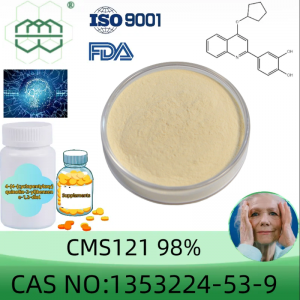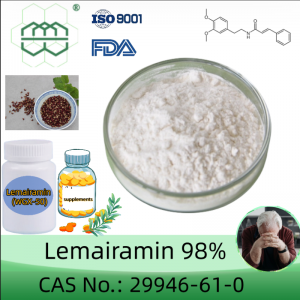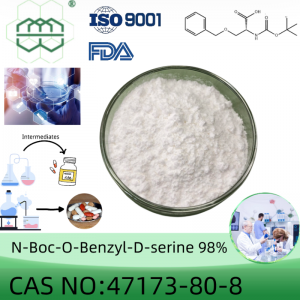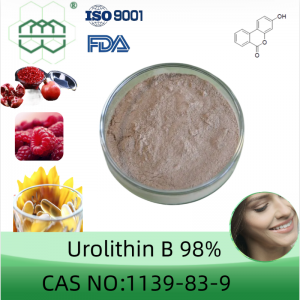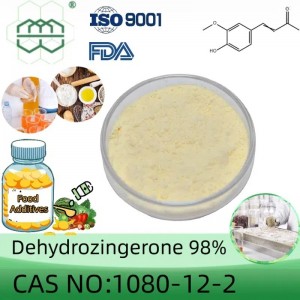Mitoquinone manufacturer CAS No.: 444890-41-9 98% purity min. Bulk supplements ingredients
Product Parameters
| Product name | Mitoquinone |
| Other name | Mito-Q;MitoQ;47BYS17IY0;
UNII-47BYS17IY0; Mitoquinone cation; Mitoquinone ion; triphenylphosphanium; MitoQ; MitoQ10; 10-(4,5-dimethoxy-2-methyl-3,6-dioxocyclohexa-1,4-dien-1-yl)decyl-; |
| CAS No. | 444890-41-9 |
| Molecular formula | C37H44O4P |
| Molecular weight | 583.7 |
| Purity | 98% |
| Appearance | brown powder |
| Packing | 1kg/bag, 25kg/barrel |
| Application | Dietary Supplement Raw Materials |
Product introduction
Mitoquinone, also known as MitoQ, is a unique form of coenzyme Q10 (CoQ10) specifically designed to target and accumulate within mitochondria, the powerhouses of our cells. Unlike traditional antioxidants, which may have difficulty penetrating the mitochondrial membrane, mitochondrial quinones are engineered to effectively reach this important organelle, where they exert their powerful antioxidant effects. So, what makes mitocone different from other antioxidants? The key is its ability to directly combat oxidative stress within mitochondria, where most harmful free radicals are produced. By neutralizing these free radicals at their source, mitochondrial quinones play a vital role in protecting mitochondrial function and overall cellular health. Mitochondrial quinones target mitochondria by covalently binding to lipophilic triphenylphosphine cations. Due to the large mitochondrial membrane potential, cations accumulate up to 1,000 times more in cellular mitochondria than non-targeted antioxidants such as CoQ or its analogues, allowing the antioxidant moiety to block lipid peroxidation and protect mitochondria Protected from oxidative damage. By selectively blocking oxidative damage to mitochondria, it prevents cell death.From cardiovascular health to neurodegenerative diseases, mitocone has demonstrated its potential to reduce oxidative damage and support cell resiliency.
Feature
(1) High purity: Mitoquinone can obtain high-purity products through refining production processes. High purity means better bioavailability and fewer adverse reactions.
(2) Safety: High safety, few adverse reactions.
(3) Stability: Mitoquinone has good stability and can maintain its activity and effect under different environments and storage conditions.
Applications
In the context of aging, the decline in mitochondrial function and the accumulation of oxidative damage are key factors in the aging process. The targeted antioxidant effects of mitochondrial quinones within mitochondria make them strong candidates for interventions aimed at promoting healthy aging and longevity. With its ability to protect neurons from oxidative damage and support mitochondrial function, mitocone holds promise for addressing neurodegenerative diseases such as Alzheimer's and Parkinson's disease. Additionally, its neuroprotective properties may delay cognitive decline associated with aging, providing a potential way to maintain cognitive vitality as we age. In addition, in the field of skin care, the antioxidant capacity of mitoxone has also attracted people's attention. Skin is constantly exposed to environmental stressors and is highly susceptible to oxidative damage. By harnessing the power of mitochondrial quinones, skin care formulas can enhance the skin's ability to resist oxidative stress, resulting in a more youthful, radiant complexion.










